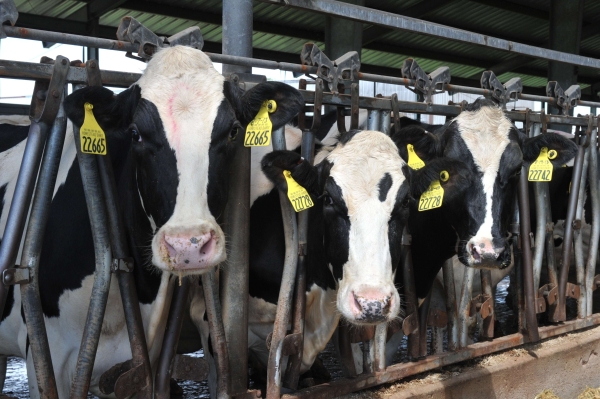
MUSCAT: Oman’s new dairy farm could generate not just employment for Omanis, but self-sufficiency in food for the nation, as well.
Plans are underway to set up a new dairy farm in Buraimi, as per the Sultanate’s new Tanfeedh initiative to revitalise and diversify the nation’s economy.
Named the Al Mazoon farms, this integrated dairy farm will initially have 4,000 cows and slowly expand to 25,000 animals over a period of 10 years.
“This farm is supposed to produce 89 million litres of milk by 2020, and 202 million litres of milk by 2026,” said Mustafa Al Riyami, Coordination and Follow-up Specialist for the Public Authority for Stores and Food Reserves.
“By 2020, we’ll have a self-sufficiency of 72 per cent, and by 2026, we’ll be at 87 per cent self-sufficiency,” he added. “By 2040, we’ll be at 135 per cent self-sufficiency, which means we can store and export some of what we produce. The strategic view for this is that we are trying to achieve food security for Oman.”
This plan was conceived when the semi-government food security agency, the Oman Food Investment Holding Company, was founded in 2014.
“If we are planning to start producing by 2020, we need to start construction of the farm by 2018,” he said. >A6
“To feed the cows, we will look to be growing feed in the country, but there is likely to be a shortage, so it will be bought from outside, because cows require special feed in order to produce milk.
“To create full-time employment, to begin our initial operation, we will require at least 300 employees,” he added.
“In fact, with the experts and the workers, we will easily create more than 300 jobs, and that is even if you don’t think about the allied sectors, such as logistics, storage, transportation, and more,” he added.
Dr. Omar Al Jabri is Assistant Dean for Training and Community Service at the College of Marine and Agricultural Sciences at Sultan Qaboos University.
“We have a shortage in supply, so for a long time we’ve been only relying on importing dairy products, because we have only one farm,” he said. “It will not accommodate the demands of the population here. We had one farm in Sohar, as well, but that was closed down, and was a big loss for us, because now we have to rely on external supplies, primarily from Al Marai in Saudi Arabia and from Al Rawabi in the UAE. “The population in Oman is increasing, and when we talk about milk and yoghurt, there is only a slight percentage that is supplied by Omani dairy producers,” added Al Jabri. “If you look at other valuable products from milk, we do not produce any cheese for commercial reasons, and other things, such as butter, are also imported.
“In Oman, we only produce milk, yoghurt and laban, but we have the potential to do this because we are not different from other countries when it comes to climate, and we can have the climate to produce dairy products, and it is also about food security, which is really important because when you always look to imports, the public will favour their domestic markets first.
“When we reach a situation of being self-sufficient, then we can expand to exporting to other markets, and there is a very high potential for that.
“When you talk about dairy products, you need employees with different specialisations,” he explained. “As we talk at the college here, we graduate so many students from different areas that are required for the core business. You need people for marketing, for logistics, for accounts, economics, etc.
“There are going to be jobs in nutrition, animal sciences, and veterinary technology where you deal with animals, and if this farm is going to produce its own forage, then you need people who are familiar with agriculture and mechanisation. This means you also need people who are good when it comes to soil welfare and engineering.
“You will need someone who ensures that these specialisations are integrated. Then we’d come to other opportunities, such as transportation, people working in the laboratories, IT, human resources, and I believe we have plenty of Omanis who are capable of doing such jobs. If they get the right mentoring and training, this could be a very successful project for the country.
“We are talking about 3,000 jobs, as a whole, for this project.”
Oman’s demand for dairy and fruit juice is currently about 318 million litres, and is expected to rise to about 524 million litres by 2026.
Al Mazoon is projected to produce 282 million litres by then, meeting about half that demand.